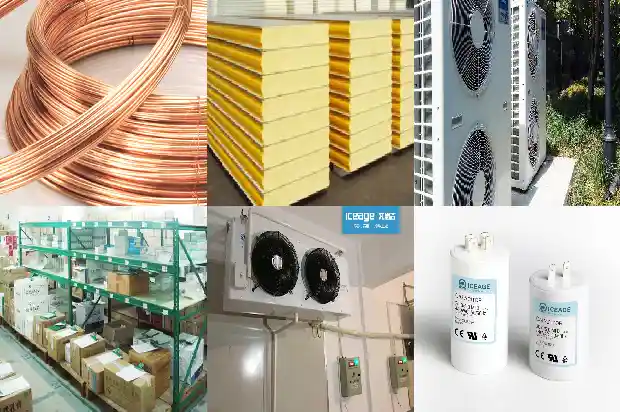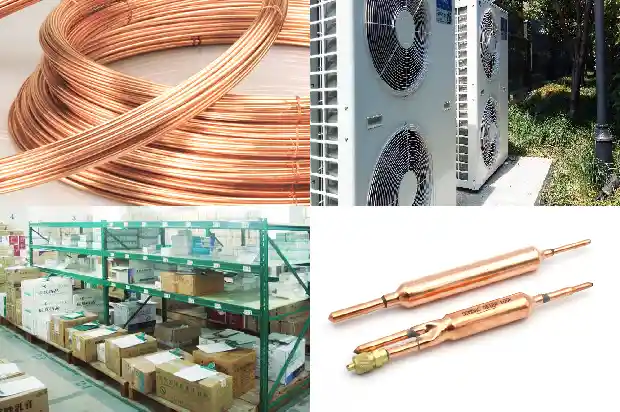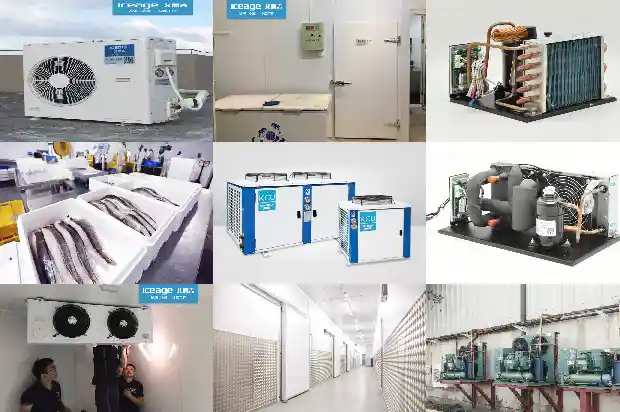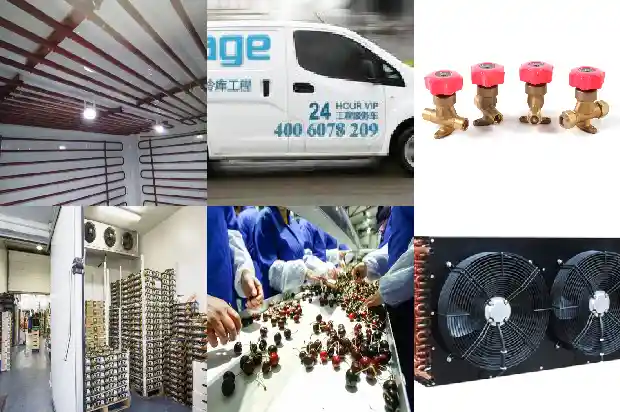CO2 Refrigeration Applications
2024-09-03
With the proposal and gradual implementation of China's "dual carbon" goals, "carbon dioxide refrigeration" has become one of the focuses of attention in the industry.

Application status of CO2:
First, in the field of automotive air conditioning. Due to the large amount of refrigerant emissions and great harm to the environment, environmentally friendly refrigerants must be adopted as soon as possible.
A typical CO2 automotive air conditioning system is the same as the R134A automotive air conditioning system.
First, in the field of automotive air conditioning. Due to the large amount of refrigerant emissions and great harm to the environment, environmentally friendly refrigerants must be adopted as soon as possible.
A typical CO2 automotive air conditioning system is the same as the R134A automotive air conditioning system.

Second, heat pump water heaters. Under supercritical conditions of CO2, there is a considerable temperature slip during heat release, which is conducive to heating hot water to a higher temperature of 65-95°C.
The application of CO2 in heat pump water heaters all uses transcritical cycles. Due to its high pressure difference, the irreversible loss in the expansion process is the main loss of the CO2 heat pump system.
The application of CO2 in heat pump water heaters all uses transcritical cycles. Due to its high pressure difference, the irreversible loss in the expansion process is the main loss of the CO2 heat pump system.

Third, commercial refrigeration systems. CO2 has good low-temperature flow and heat transfer characteristics, and is used for fresh storage, refrigeration, and low-temperature freezing of supermarket foods. In addition, CO2 is also used as a coolant or secondary refrigerant in refrigeration systems with strict safety requirements such as food display cabinets. CO2 is also widely used as a low-temperature refrigerant in commercial cascade refrigeration systems. Supermarket refrigeration, especially the refrigeration application of large and medium-sized supermarkets, is the most important application field of CO2 in commercial refrigeration.
There are mainly three basic ways for CO2 to be applied in large and medium-sized supermarket refrigeration systems:
(1) Used as a secondary refrigerant for the secondary circuit of the main refrigeration cycle, or a secondary circuit with a phase change.
(2) Used as the main refrigerant and applied in a subcritical system, adopting a subcritical cycle. Generally, it operates as a cascade system together with other independent medium-temperature circuits.
(3) Used as the main refrigerant and applied in a transcritical system, adopting a transcritical cycle.
There are mainly three basic ways for CO2 to be applied in large and medium-sized supermarket refrigeration systems:
(1) Used as a secondary refrigerant for the secondary circuit of the main refrigeration cycle, or a secondary circuit with a phase change.
(2) Used as the main refrigerant and applied in a subcritical system, adopting a subcritical cycle. Generally, it operates as a cascade system together with other independent medium-temperature circuits.
(3) Used as the main refrigerant and applied in a transcritical system, adopting a transcritical cycle.
CO2 process as a secondary refrigerant:
The liquid CO2 flowing out of the liquid storage tank is pressurized by a liquid pump and then flows through the heat load (display cabinet or cold air coil in the warehouse). After absorbing heat and vaporizing, it forms a gas-liquid two-phase fluid with a certain dryness. It returns to the evaporator of the main refrigeration system and is recondensed into a liquid and then returns to the CO2 liquid storage tank for the next cycle.
The liquid CO2 flowing out of the liquid storage tank is pressurized by a liquid pump and then flows through the heat load (display cabinet or cold air coil in the warehouse). After absorbing heat and vaporizing, it forms a gas-liquid two-phase fluid with a certain dryness. It returns to the evaporator of the main refrigeration system and is recondensed into a liquid and then returns to the CO2 liquid storage tank for the next cycle.
- CO2 liquid has low viscosity. Especially in the low-temperature zone, the viscosity of conventional secondary refrigerants increases significantly with the decrease of temperature. Using CO2 can significantly save the power consumption of the liquid pump.
- CO2 is phase-change heat transfer with a very high heat transfer coefficient and a large latent heat of vaporization. The mass flow rate of CO2 and the power consumption of the liquid pump for the same heat transfer amount are small, which can reduce the conveying pipe diameter and liquid pump.
- Due to the very high heat transfer coefficient of CO2, the evaporation temperature of the main refrigeration circuit can be increased under the same heat transfer amount to improve the efficiency of the entire system.
Although the superiority and reliability of carbon dioxide refrigeration technology are good, at present, there is still a coexistence of multiple refrigeration methods, and the status quo of traditional refrigeration methods being dominant.
Compared with Freon and ammonia refrigeration, the advantages of carbon dioxide refrigeration:
First, it is green, safe and reliable. The ozone depletion potential (ODP) of carbon dioxide is 0, and the global warming potential (GWP) is 1, which is much lower than that of Freon refrigerants. At the same time, carbon dioxide is non-toxic, non-flammable, and has stable chemical properties. During the operation of equipment, it can ensure the safety of personnel and food. In the future, there will be no problem of refrigerant recovery and treatment.
Second, it has good heat transfer performance, compact structure, and small equipment footprint.
Third, carbon dioxide is a by-product of industrial product production and is easy to obtain. Its price is only one-tenth of that of conventional Freon.
First, it is green, safe and reliable. The ozone depletion potential (ODP) of carbon dioxide is 0, and the global warming potential (GWP) is 1, which is much lower than that of Freon refrigerants. At the same time, carbon dioxide is non-toxic, non-flammable, and has stable chemical properties. During the operation of equipment, it can ensure the safety of personnel and food. In the future, there will be no problem of refrigerant recovery and treatment.
Second, it has good heat transfer performance, compact structure, and small equipment footprint.
Third, carbon dioxide is a by-product of industrial product production and is easy to obtain. Its price is only one-tenth of that of conventional Freon.

CO2 as a refrigerant has two relatively obvious disadvantages:
The operating pressure of the refrigeration system is high and the refrigeration efficiency is relatively low. The resulting technical difficulties and cost increases have become the main reasons restricting the development of CO2 technology.
The working pressure of the CO2 transcritical refrigeration cycle is about 6 to 8 times that of the traditional refrigerant CFC or HCFC system pressure. Therefore, in the process of designing, manufacturing, and installing compressors, heat exchange equipment, auxiliary equipment, valves, pipelines, and pipe fittings, it is necessary to ensure their pressure resistance. For efficiency, further strengthening is still needed in the design and development of key components such as compressors, gas coolers, and evaporators. At present, the method of using expanders to recover throttling loss energy to improve the refrigeration cycle efficiency is relatively common in transcritical cycles. In the research of other accessories, economizers, ejectors, etc. are introduced to improve system performance.
The operating pressure of the refrigeration system is high and the refrigeration efficiency is relatively low. The resulting technical difficulties and cost increases have become the main reasons restricting the development of CO2 technology.
The working pressure of the CO2 transcritical refrigeration cycle is about 6 to 8 times that of the traditional refrigerant CFC or HCFC system pressure. Therefore, in the process of designing, manufacturing, and installing compressors, heat exchange equipment, auxiliary equipment, valves, pipelines, and pipe fittings, it is necessary to ensure their pressure resistance. For efficiency, further strengthening is still needed in the design and development of key components such as compressors, gas coolers, and evaporators. At present, the method of using expanders to recover throttling loss energy to improve the refrigeration cycle efficiency is relatively common in transcritical cycles. In the research of other accessories, economizers, ejectors, etc. are introduced to improve system performance.
Related Articles
- Have You Encountered the Three Common Problems of Refrigeration Compressors?
- How to Calculate Refrigeration Load? And What Are the Issues?
- What to Do if the Compressor of a Frozen and Refrigerated Display Cabinet Runs but the Refrigeration Effect Is Poor?
- Instructions for Welding and Drainage in the Installation of Refrigeration Equipment Pipelines
- Common Pressure Valves and Protection Devices in Refrigeration Units
- Precautions for Using Rotary Refrigeration Compressors
- What Misconceptions Should Be Avoided in Low - temperature Refrigeration System Repairs
- Essential for Maintenance! Parameters and Phenomena of Normal Operation of Refrigeration and Heating Systems
- Composition and Common Faults of Screw Refrigeration Compressors
- How to Read the High - and Low - Pressure Gauges of Refrigeration Air - conditioners?
- What is Cascade Refrigeration?
- Introduction to Control Valves in Refrigeration Systems
- Welding Equipment Used in Refrigeration System Maintenance
- Where Lie the Key Construction Technologies of the Ammonia Refrigeration System?
- What to Do When a Refrigeration Unit Malfunctions?
- Could a Tiny Copper Tube Cause a Multi - split Air Conditioner to Stop Cooling? Refrigeration Workers Must Pay Attention!
- Has Your Refrigeration System Experienced "Oil Carry - over"?
- Basic Knowledge of Valve - type Components in Refrigeration Systems (Technical Sharing)
